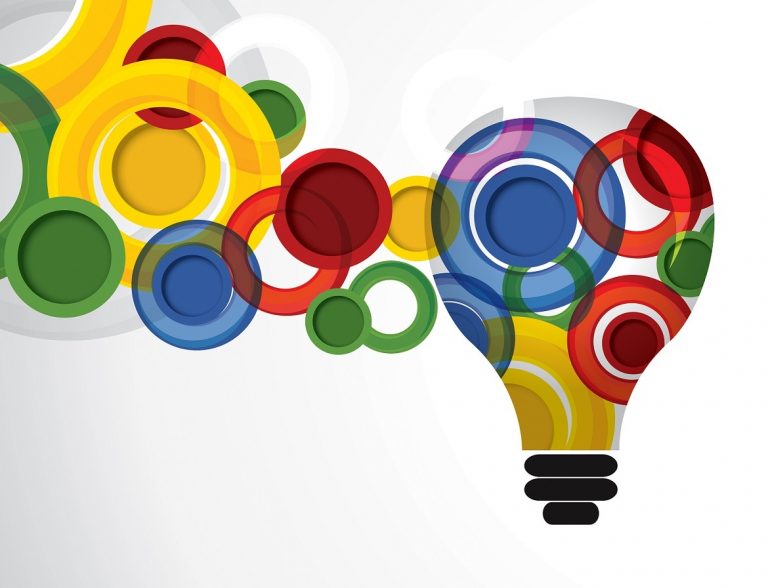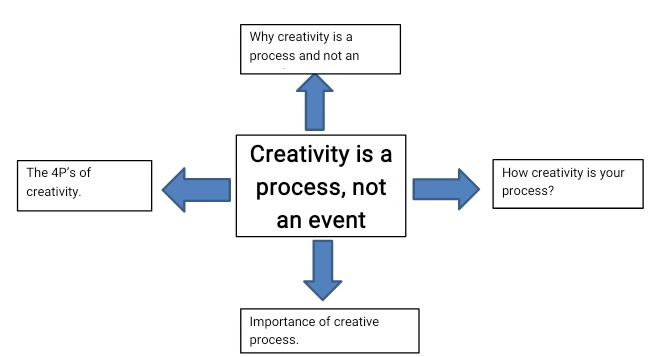
Creative thinking involves taking what already exists and putting it together in a new way
By Rubab Shaikh | Qudsia Mahesar | Dilawez Shaikh |Saifullah Solangi
 Creativity can be a milestone rather than a milestone
Creativity can be a milestone rather than a milestone
The ability to invent or recognize concepts, options, or possibilities that might be useful in solving problems, interacting with others, or entertaining oneself and others is called creativity. Making new connections between existing ideas or recognizing connections between concepts is part of the creative process. Creative thinking involves taking what already exists and putting it together in a new way, rather than starting from scratch and creating something entirely new. Our ability to think creatively depends on our ability to connect seemingly unrelated ideas.
Creative thinking: fate or evolution
Is it a skill we are born with or a skill we develop with practice? The conclusion discussed by experts is that a lot of research has been done to find out whether creativity comes naturally or we have to work at it. The George Land Study: In the 1960s, a creative performance researcher named George Land conducted a study of 1,600 five-year-old children, and 98 percent of the children scored in the “highly creative” range. Dr. Land retested each subject at five-year increments. When the same children were 10 years old, only 30 percent scored in the highly creative range. That number dropped to 12 percent at age 15 and just 2 percent at age 25. As the children grew into adults, creativity was effectively trained in them. In the words of Dr. Landa, “Uncreative Behavior is learned”.
Barbara Kerr Study: According to psychology professor Barbara Kerr, “about 22% of the variance in creativity is due to genetics. This discovery was made by studying differences in creative thinking between sets of twins. All of this is to suggest that using the “I’m just not the creative type” rationale is a very poor way to avoid creative thinking. Some people are undoubtedly more creative than others. Most of our creative thinking skills can be learned and almost everyone is born with some level of creativity. How you internally rate your skills is one of the most important factors. More specifically, whether you approach the creative process with a fixed attitude or a growth mindset greatly affects your ability to be creative.
Creativity is not an event, but a process. You have to overcome emotional and mental obstacles. You have to make a conscious effort to practice your craft. And watching your creative brilliance blossom takes persistence—perhaps years or even decades, as Newton did. The story of the falling apple has become one of the enduring and iconic examples of a creative moment. It is a symbol of the inspired genius that fills your brain during those “eureka moments” when the creative conditions are just right.
Why is creativity a process, not an event?
Creativity is a process, not an event. It’s not just eureka moment. You have to work through mental barriers and internal blocks. You must commit to practicing your craft with intention. And you have to stick to the process for years; maybe even a decade like Newton to see your creative genius blossom.
Intelligence v/s creative thinking
Threshold theory: The top 1 percent of intelligence has no correlation with fantastic creativity. Instead, you just have to be smart (not a genius) and then work hard, practice intentionally, and put in the reps.
The differences between these two mindsets are detailed in Carol Dweck’s fantastic book, Mindset: “The New Psychology of Success”. Here’s a quick summary in Dweck’s words:
“The whole self-esteem movement has wrongly taught us that praising intelligence, talent, and ability will boost self-confidence, self-esteem, and all great things will follow. But we’ve found that it’s turning around. People who are praised for their talent are now afraid to do the next thing, to take on a difficult task and not appear talented, thus spoiling their reputation for brilliance. So instead, they will stick to their comfort zone and really fight back when they encounter setbacks.
So what should we praise? The effort, the strategy, the tenacity and perseverance, the bravery that people show, the resilience they show in the face of obstacles, that they bounce back when things go wrong and know what to try next. So it is thought as a big part of fostering a growth mindset in the workplace is conveying those values of the process, providing feedback, rewarding the people involved in the process, and not just the successful outcome.”
3 Ps of creativity
Person: Any creative endeavor centers on the individual. They rely on their knowledge, their surroundings (or press), their imagination and their drive to create a product. The creative qualities of a person are difficult to quantify. However, they can be measured.
Process: It is the way a person thinks when trying to come up with a new solution or solve a problem.
Product: A person creates a product that is the end result of a creative process. The new innovation is this. Product is probably the least researched aspect of creativity. Broadly speaking, they are seen as the result of a process and a person.

_______________________
The writers are students of BS-III, Anthropology, at Shaheed Zulfiqar Ali Bhutto Institute of Science and Technology (SZABIST) Larkana Sindh.
“I’m truly impressed by the creativity and depth of thought you’ve put into your article. The way you navigate the creative process is inspiring!”